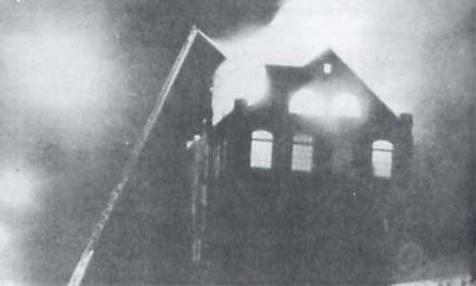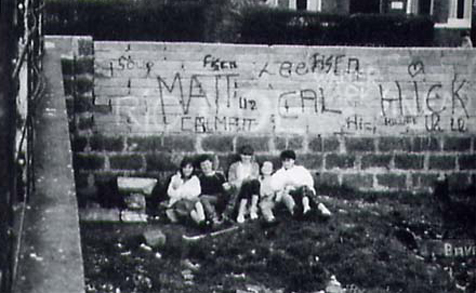
 Viewing Northern Ireland from the relative safety of London, Paris or New York, a picture of bombs, bullets and civil disorder conjures easily in the mind. Promoted by the media, Ulster’s daily diet of death and self-destruction has been our major export of some twenty years and painted a war-zone image akin to Beirut or Soweto. Television, radio and newspapers flourish on the steady supply of hatred and bigotry manifested in sectarian killings and malicious intent of every conceivable variety. Politicians and clergymen have both failed to produce the solution to this complex problem leaving Ulster people with little alternative but to accept a level of violence as part of everyday life. The continuing presence of a large military force and the acceptance of armed police everywhere has been moulded into the system but in the face of such adversity the average Ulsterman has repeatedly shown great resilience and character. Commerce and industry strive manfully to meet the challenge of the troubles against a background of worldwide economic decline while local tourism fights an uphill task to project Northern Ireland on its better side. There has been success with this almost impossible task and visitors have marvelled at local hospitality and friendliness but too often the brighter lights are dimmed by the darker shades of sectarianism. Business continues to meet the challenge and local sport has played a major role in the preservation of normal life, maintaining a high level of morale during these troubled years. In association with fellow sports, cricket has faced this crisis with resolution and helped create the possibility of a peaceful integrated society. As a sport, it recognises no political or religious affinity and in Ulster has done well to distance itself from the diverse problems all around. Success cannot be easily measured in these terms but against all odds local cricket has rallied from the depths to enter the 1987 season in a prosperous and thriving state, indicative of the true spirit of sport in general. However for many clubs and indeed families, the scars will never disappear.
Viewing Northern Ireland from the relative safety of London, Paris or New York, a picture of bombs, bullets and civil disorder conjures easily in the mind. Promoted by the media, Ulster’s daily diet of death and self-destruction has been our major export of some twenty years and painted a war-zone image akin to Beirut or Soweto. Television, radio and newspapers flourish on the steady supply of hatred and bigotry manifested in sectarian killings and malicious intent of every conceivable variety. Politicians and clergymen have both failed to produce the solution to this complex problem leaving Ulster people with little alternative but to accept a level of violence as part of everyday life. The continuing presence of a large military force and the acceptance of armed police everywhere has been moulded into the system but in the face of such adversity the average Ulsterman has repeatedly shown great resilience and character. Commerce and industry strive manfully to meet the challenge of the troubles against a background of worldwide economic decline while local tourism fights an uphill task to project Northern Ireland on its better side. There has been success with this almost impossible task and visitors have marvelled at local hospitality and friendliness but too often the brighter lights are dimmed by the darker shades of sectarianism. Business continues to meet the challenge and local sport has played a major role in the preservation of normal life, maintaining a high level of morale during these troubled years. In association with fellow sports, cricket has faced this crisis with resolution and helped create the possibility of a peaceful integrated society. As a sport, it recognises no political or religious affinity and in Ulster has done well to distance itself from the diverse problems all around. Success cannot be easily measured in these terms but against all odds local cricket has rallied from the depths to enter the 1987 season in a prosperous and thriving state, indicative of the true spirit of sport in general. However for many clubs and indeed families, the scars will never disappear.
 Bombs and Bullets Take Their Toll
Bombs and Bullets Take Their Toll
The most serious terrorist attacks on property occurred in the early seventies. It is impossible to understand the logic of attacking cricket clubhouses, but Brigade, Queen’s, Instonians, City of Derry, Portadown, Post Office, North, Sion Mills, Lurgan and Cliftonville all suffered to various degrees at the hand of the terrorist. The explosions at Beechgrove and Shane Park were particularly devastating, but to the credit of both clubs, two splendid clubhouses now stand proudly on the same sites. The attack on the Cliftonville Club has no parallel and was perhaps the saddest chapter in a long chronicle of malicious damage and criminal injury. It took place in 1972 when the troubles were hitting a peak and effectively removed one of Ulster cricket’s most historic and picturesque grounds. It also portrayed bigotry and sectarianism at its ugly worst and those thugs who attacked the players and later destroyed the clubhouse and its contents, did nothing to project their “liberated” Ireland in anything other than barbaric terms. It marked the lowest ebb cricket hit during the troubles and while other incidents were serious in their own right, none matched the savage eviction of this famous club by criminals masquerading under a nationalist banner. Both hockey and cricket sections rallied independently and, assisted by monetary compensation from the Government, continue to exist, but 1972 marked the end of an era in their history and it is doubtful they will ever regain their former glory.








